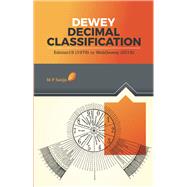The present book simply aims to introduce the students to the process of assigning and especially synthesizing the class numbers by the 19th edition (1979) of the Dewey Decimal Classification. This student-oriented text only aims at them. The chapters and the examples have been graded to some extent. No background knowledge, whatsoever, has been assumed on the part of the users. Though it aims at the beginner, it provides a complete course to train the students in the techniques of subject analysis and number building involving the use of various auxiliary tables and multiple syntheses. The graded process of number building may mirror before the students the increasing faceted nature of the system and its advancing steps towards, what S R Ranganathan terms as, depth classification. To avoid verbosity the number building has been depicted through diagrams, equations, and facet formulae to mentally stimulate the learners. In this fashion the students may easily learn the ropes of the DDC through this how-to, user friendly text. The aim is to be amply illustrative and to introduce the new concepts and methods in number building step-by-step. The book aims to provide library schools a class text with many illustrated examples for practice of the DDC. Many examples have been taken from 21st century literature, and the theory has been updated to its latest WebDewey edition (2018/2019) with an appendix on the last abridged edition. The chapter on the use of Cutter table may help the students and practitioners to construct complete call number for documents in the library.








